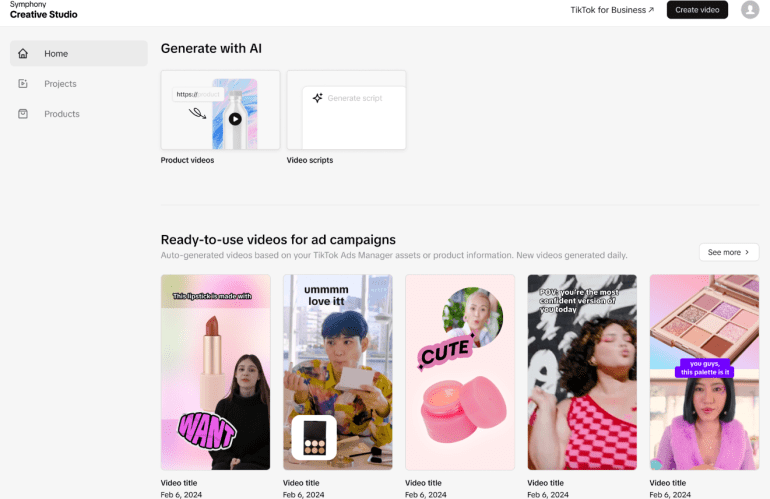- TikTok unveils “TikTok Symphony” AI suite for brands, integrating generative AI into its advertising business.
- The suite includes “Symphony Creative Studio” for effortless video generation and “Symphony Assistant” for script refinement and trend insights.
- “Symphony Ads Manager Integration” enhances existing brand videos automatically.
- “TikTok One” offers a centralized platform for marketers with access to creators, agency partnerships, and creative tools.
- New performance solutions driven by predictive AI aim to maximize sales outcomes.
- TikTok’s influence on consumer behavior highlighted, with significant percentages of users making purchases and researching products on the platform.
- Regulatory uncertainty looms over TikTok’s future in the U.S., potentially reshaping the digital advertising landscape.
Main AI News:
TikTok unveils its foray into generative AI technology with the introduction of the “TikTok Symphony” AI suite tailored for brands. This innovative suite, announced on Tuesday, promises to revolutionize advertising strategies by empowering marketers with cutting-edge tools for scriptwriting, video production, and asset enhancement.
At the heart of this suite lies the groundbreaking “Symphony Creative Studio,” an AI-powered video generator touted by the company to seamlessly craft TikTok-compatible videos with minimal inputs from advertisers. This studio not only streamlines the video creation process but also offers pre-existing video templates aligned with ad campaigns, leveraging assets from TikTok Ads Manager or product data.
Complementing this studio is the “Symphony Assistant,” a sophisticated AI companion engineered to elevate campaign effectiveness. Tasked with script generation and refinement, along with dispensing expert recommendations, this assistant empowers brands to craft captivating narratives tailored to their target audience. From crafting attention-grabbing lines for product launches to harnessing trending topics on TikTok, its versatility amplifies marketing initiatives.
Moreover, TikTok introduces the “Symphony Ads Manager Integration,” a pivotal tool for optimizing existing brand videos. This integration enables automatic enhancements to elevate video quality, ensuring that brands maximize their impact amidst the platform’s dynamic content landscape.
In tandem with these advancements, TikTok unveils “TikTok One,” a centralized hub designed to empower marketers with unparalleled resources. Boasting access to a vast network of creators, agency partnerships, and creative tools, this platform equips marketers with the arsenal needed to thrive in the competitive digital landscape.
Augmenting its advertising arsenal further, TikTok introduces performance solutions driven by predictive AI, aimed at maximizing sales outcomes. Through predictive algorithms, advertisers gain insights to curate compelling content and pinpoint ideal audience segments, optimizing campaign efficacy.
In a testament to TikTok’s burgeoning influence, recent statistics underscore its impact on consumer behavior. With 61% of users making purchases directly on TikTok or post-ad exposure, and 59% turning to the platform for gaming decisions, its role in shaping consumer preferences is undeniable. Even automotive research sees a surge, with 52% of users attributing their interest to TikTok content.
However, amidst its advertising triumphs, TikTok faces a looming uncertainty concerning its future in the U.S. Regulatory challenges loom large, with President Joe Biden’s recent bill casting a shadow over the app’s fate. Should TikTok face a ban, the void left in its wake could pave the way for competitors to seize the opportunity, reshaping the digital advertising landscape.
Conclusion:
TikTok’s integration of generative AI technology into its advertising ecosystem signifies a significant leap forward in empowering brands to thrive in the digital sphere. With streamlined content creation, enhanced campaign effectiveness, and predictive performance solutions, TikTok is poised to reshape the market dynamics. However, regulatory challenges pose a looming threat, underscoring the need for adaptability and innovation in navigating the evolving advertising landscape.

